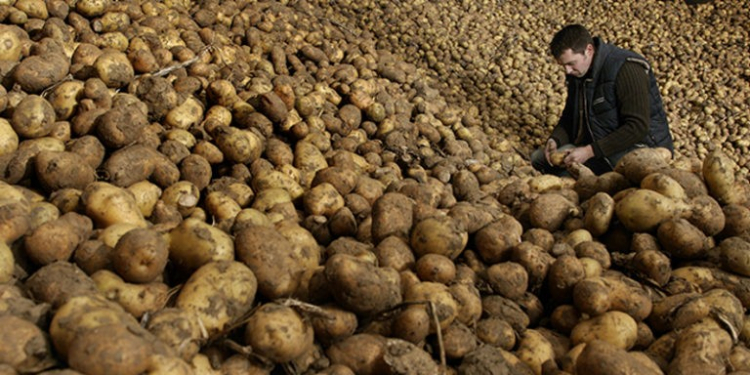The manufacturer of sensor-based food sorting systems, TOMRA Sorting Food is becoming aware of the food waste issue and works closely with farmers, processors and retailers to achieve the objective of reducing food waste.
TOMRA Sorting Food’s Steve Raskin, says that the amount of food being left on the production line can add up significantly as it’s viewed as waste and not something that can be repurposed. Therefore there is increased motivation for processors to reduce waste and, by doing so, reduce inefficiencies, lower overheads and increase profits.
“There are a number of factors that can contribute to food waste – it does not just start with the processor. By initially looking at the farmer who plants the seed, and examining every stage of the food production process, you can attempt to eliminate food waste”, he explains.
“Other ways to cut levels of waste involve the sorting machines themselves. Today, the real focus should be on how much ‘good’ product is unnecessarily being removed from the processing line and how the food sorter can be optimized. The further into the production line you go, the higher the value of the product becomes as you reach the blanching, freezing and storing stages. Sensor-based sorting machines can determine that a product is 70 per cent good quality and, rather than consigning this to waste, the majority of the product can then be reworked until it is ready to be used. For example, when storing potatoes or blueberries, you must ensure healthy product doesn’t suffer from mold or rot to help lengthen the lifetime of the product”, according to the expert from TOMRA.
Systems must also continue to evolve in order to create enhanced yields and the ejectors on sorting machines are gradually becoming smaller and more precise, meaning that when the product defect is being removed, only 5mm of good product is lost, rather than 10mm.
The expert explains that only 15 years ago, 90 per cent of all food sorting was done using manual labor and now, in Western Europe, machines are being upgraded year-on-year to ensure higher food safety and less food waste. Also, by giving operators greater control over the sort they want to carry out, we can see how human intelligence is being integrated into a machine.
“In addition, food producers and processors are also looking at increasing their sustainability plans as reducing food waste will soon become crucial to preserving corporate sustainability. Today, the entire food processing sector is becoming much more efficient in terms of energy and waste, and there are many more types of processing tools available for the production line to get the most out of produce”, Raskins says.
Peel 1,000 potatoes in 4-5 seconds
More specifically, steam peeling is a process which can help to tackle food waste within the potato industry, as it has the ability to peel 1,000 potatoes in 4-5 seconds. The speed of steam peeling potatoes ensures the minimum amount flesh is lost, while at the same time making considerable savings in steam usage.
Steve Raskin explains: “Steam peeling is achieved by heating the moisture beneath the potato skin, using high pressure steam. When the steam exhaust occurs, the moisture expands rapidly – in less than one second – and separates the skin from the flesh. This results in the user keeping the shape of the potato and achieving the minimum amount of waste.
“For example, since introducing a steam peeler into its potato peeling process, a major producer in the French fry industry is already realizing significant savings not only in the reduction in food waste, but also due to the reduction in the amount of steam being used.
In its latest sustainability report this company recently announced that 20 per cent less steam was now being required per ton of potatoes and that the machine was much faster at peeling than before installation, demonstrating that steam peeling can save both money and time”, says Raskin.
Currently across the world, TOMRA’s steam peeling machines are processing around 20 million tons of potatoes every year. With a possible yield improvement of up to one per cent, and an average person consuming 25 kg of potatoes per year, that one per cent saving could provide potatoes to more than eight million people without the need for extra resources or additional land being farmed.
Almost a third of all food produced worldwide is never eaten, leading to 1,3 tons of food waste each year. This includes around 45 per cent of all fruit and vegetables and 20 per cent of meat.

